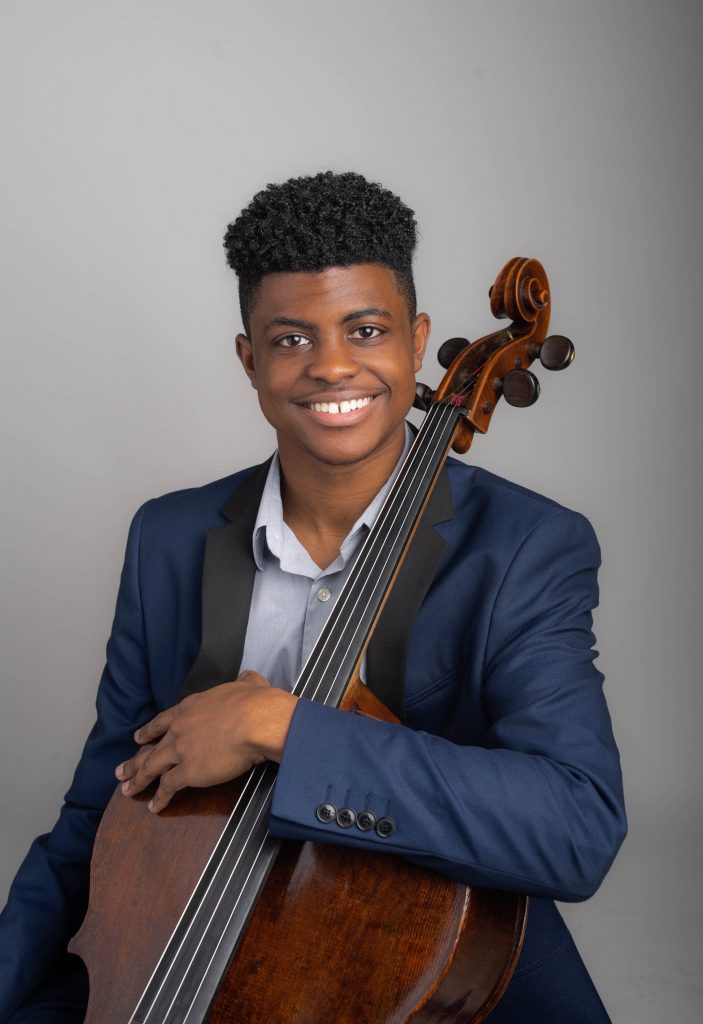NY Youth Symphony, cellist Elliott show their spirited mettle at Carnegie Hall

Youth concerts are, of course, an opportunity to hear talented voices with hopeful futures. Sunday afternoon in Carnegie Hall, the New York Youth Symphony, under music director Michael Repper, showed off two such figures; cellist Sterling Elliott and composer Tanner Porter. The orchestra played the world premiere of Porter’s The Sycamore and the Oak, along with Respighi’s Pines of Rome, and—showing no concession to age—they backed Elliott in Dvořák’s grand Op. 104 Cello Concerto in B minor.
Intellectually, listening to a youth symphony is different than listening to the New York Philharmonic—there are some reliable differences one should expect between teenage musicians and professionals. The latter have more musical and experiential seasoning, of course, but are also more physically developed both through practice and maturity, have more heft to their playing.
The NYYS, which spans the ages of 12-22 in all its configurations, played with the physical and spiritual lightness of youth—the brass section didn’t have the force of a professional orchestra, nor could the strings maintain the same tone quality when playing at their loudest. Nor could they or Elliott plum the utmost depths of melancholy in the Cello Concerto (unfortunately, there’s likely plenty of heartache to come that will deepen their playing).
Still, this was a substantial program, and well played. The woodwinds were bright, colorful, and etched in outline all afternoon, and the strings often produced a velvety tone that was an acute pleasure.
The Cello Concerto, which led off the afternoon, got off to a bit of a sluggish start. The orchestra’s technique was fine, and Elliott produced a singing tone and vibrant expressive projection from his first notes. But the two felt like they were moving on parallel tracks for a while. One had the sense that the orchestra was concentrating on their playing so much that they weren’t listening to the soloist.
There is a stretch in the first movement where the pulse slows, even as the tempo remains the same. Here, both Elliott and the orchestra seemed to draw in and release a long breath, and from there the playing was more relaxed fluid, and above all, integrated, and one was fully involved in the music.
Elliott showed an excellent ear for the long line in the solo part, which went well beyond demonstrating he could play the notes. He showed he could also imbibe the larger form of the piece, and played with a sense of direction, with ideas of meaning and purpose. As he and the orchestra gradually came together through the Adagio and then the finale, the concerto developed into an impressive performance.
For the second half, the symphony played Porter’s new work and then Pines of Rome.
The new piece was a co-commission from the NYYS and the Interlochen Center for the Arts, and came out of Porter’s work with students at the KIPP Academy Middle School in the Bronx. She worked with them in what she called “an exercise in musical story-telling,” coming up with three original themes and then asking the students to “order the segments in a way they felt told the story they liked best.”
Inspired by two trees growing in California, the music indeed had a narrative quality, organic and visual in the sense of a soundtrack. It grew in John Adams-ish style from small, repeated units with flurries of rising woodwind riffs on top, and had something of his dark, communicative, neo-romantic language.
There were some hesitant feelings coming out of the musicians at first, but they soon were wrapped up in the flow of the music, which, through the first two sections, followed a rising path as it developed. The third section felt at first like a stumbling block, an awkward change of direction from the previous pattern. But Porter’s writing ably incorporated it into the previous structures, and the experience was of a coherent, satisfying whole.
Pines of Rome received a spirited performance—a bit excessively so at times. The orchestra’s playing was confident and energetic, so much so that in the huge ramp of sound in the “Appian Way” movement, the group eventually turned into a huge, amorphous jumble, drowning out even the brass players in the balcony. But the size and outgoing nature of the noise was still a lot of fun.
The New York Youth Symphony and pianist Michelle Cann play Florence Price’s Piano Concerto, the world premiere of Obliviana, by Patrick O’Malley, and Mahler’s Symphony No. 1, 2 p.m., May 24, in Carnegie Hall. nyys.org




